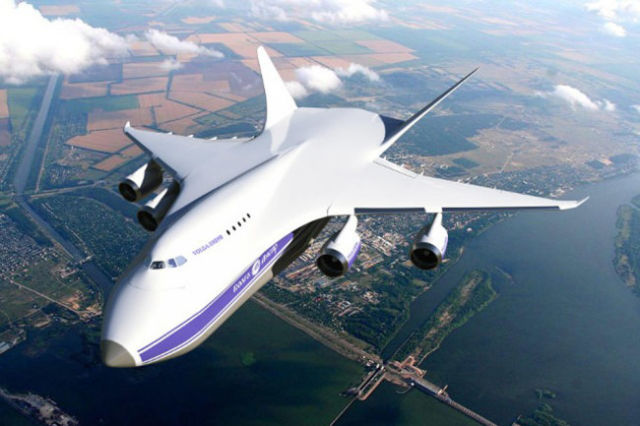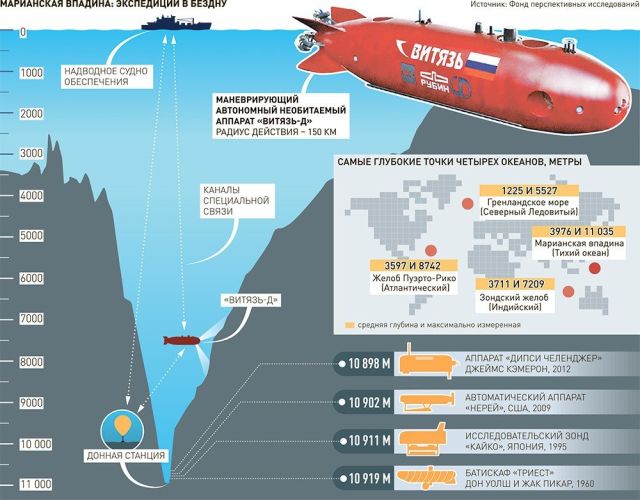New aircraft design on Russian supercomputers and programs
 How does the composite wing behave at speeds of four mach? Will the serviceability of the VityazD drone equipment when it dives in the Mariana Trench? What kind of "Elephant" will replace the transport super heavyweight "Ruslan" and will the hybrid of an ekranoplan and a heavy transport worker be able to fly on a bird's flight - from 3 to 12 meters above the ground and water? Where and why is additional thermal protection of the Angara launch vehicle nodes needed?
How does the composite wing behave at speeds of four mach? Will the serviceability of the VityazD drone equipment when it dives in the Mariana Trench? What kind of "Elephant" will replace the transport super heavyweight "Ruslan" and will the hybrid of an ekranoplan and a heavy transport worker be able to fly on a bird's flight - from 3 to 12 meters above the ground and water? Where and why is additional thermal protection of the Angara launch vehicle nodes needed?To answer these and a thousand other equally important questions that arise when creating new equipment, its designers and developers are no longer enough a slide rule and full-scale experience on a test bench. The aircraft industry, the rocket and space industry, the creation of surface ships and submarines, the auto industry and, of course, nuclear power - none of these industries can do today without a modern computing base, specially developed programs and computer codes. Already not only a drawing board from Soviet films about science and design bureaus, but also the first 3D modeling programs are a thing of the past. A new tool and at the same time the workspace of the designer becomes the "digital twin". “A few years ago a technology was introduced in our bureau, which allowed us to develop all the documentation in electronic form using 3D,” said Vladimir Dorofeyev, Director General of Malachite St. Petersburg Maritime Engineering Bureau, in a recent interview with RG. - And today we are setting a wider task: we want to create a virtual equivalent of a nuclear submarine that reproduces not only the perceived form, but also the properties and behavior of the already constructed one. This technology is known by the term "digital twin" and is an integral part of a more global concept of digital production. It is here that we see the possibility of a radical increase in efficiency, improvement of product quality and cost reduction in the implementation of new projects ... According to Dorofeev and his colleagues, digital technologies have become a part of our life, and the work of the project bureau without their use and development can no longer be imagined. Yes, there was a time when the engineers and designers involved in the project to create the first Soviet nuclear submarine needed several large buildings in different parts of Leningrad to reproduce in a wooden model - in parts-compartments, but in full size - the entire submarine community with two nuclear reactors, turbines, generators and other stuffing, including weapons - eight torpedo tubes in the nose compartment. Pumps, engines, switchboards, other equipment imitated with wooden boxes, kilometers of cables and pipelines - with ropes. Now it seems almost unbelievable. "Stone Age", - can someone say, discovering the declassified history of the first years of the Atomic Project. But after all, nothing had passed - less than the life of a single generation. In the technology and production for the same six decades, several technological structures have changed.

The aircraft have long and many times exceeded the speed of sound, the missiles become hypersonic.
In place of aluminum and its alloys, composites come into the aircraft industry. Titanium and special steel grades in the hulls of underwater vehicles allow us to conquer depths of six to seven and sweep for 12 kilometers, as the developers of the uninhabited submersible apparatus Vityaz-D from the Rubin design bureau and its customers from the Future research.
The slide rule, kulman and the first, already mastered 3D modeling programs are a thing of the past. A new tool and at the same time workspace of the designer becomes the "digital twin"
Further more.
The Admiralty shipyards in St. Petersburg have already begun cutting steel for an ice-resistant capsule "North Pole" - the first of its kind drifting polar station, which was designed by order of the Institute of the Arctic and Antarctic of the Russian Academy of Sciences.
And for interplanetary space missions and solving utilitarian tasks in near-earth orbit in Russia, an unparalleled transport and energy module (TEM) with a one-megawatt nuclear engine is being created - a kind of hybrid of tugboat, pusher and mini-AES. To cool such a reactor in an airless space, a unique and seemingly very fragile design was invented, based on the drip cooler-radiator.
Moscow NIKIET - Research and Design Institute of Power Engineering named after N.A. Dollezhala and the Keldysh Research Center undertook, on the order of Roscosmos, to create TEM and already announced the successful completion of ground tests of the cooling system of its reactor.
For the topic of our conversation, the main word here is “ground”. After all, no matter how hard you try to reproduce on earth conditions close to weightlessness, it is just an approximation. And how the proposed construction behaves in the realities of real space, one can only speculate.
Or - cheat-simulate on a supercomputer, using specially designed programs. Having seen the result on the digital model, it is possible at an early stage, when the choice has not yet been made and the money has not been spent, to make some important adjustments, to redefine something, and thereby reduce the path of trial and error.
Perhaps, before others, this need was experienced by nuclear specialists who were directly involved in the development of nuclear weapons and in maintaining the potential that had already been created and is in service. Under the conditions of a complete ban on field testing (the STBT agreement Russia signed in 1996, ratified in 2000) it would be impossible to do this without powerful supercomputers and its own calculation base.
Almost thirty years have passed since the last nuclear test conducted by our country (October 24, 1990). During this time, our nuclear scientists in Sarov and Snezhinsk have made up for the US national laboratories in Los Alamos, Livermore and Sandia in the field of supercalculations.
And they didn’t just catch up, but managed to isolate from this work an important and increasingly popular product for civilian use. The first such sign was the software package of engineering analysis and supercomputer modeling "Logos", developed in Sarov by a team of mathematicians and programmers of the Russian Federal Nuclear Center of the All-Russian Research Institute of Experimental Physics.
It was, firstly, a derivative of the unique experience of our nuclear scientists under the ban on nuclear testing. And secondly, it appears to be the result of competently built cooperation with the participation of industrial science centers, institutes of the Russian Academy of Sciences, as well as flagship enterprises in the rocket and space sphere, nuclear energy, aircraft and automotive industries.
According to the director of RFNC-VNIIEF, Valentina Kostyukov, at first a basic version of the software package for engineering analysis and supercomputer modeling was created, which found active use in high-tech enterprises.
And then, with the participation of partner companies, the creation of what is called the “product being alienated,” that is, the software package with its license, user manual, set of options and the corresponding price line, began. The case was helped by the fact that in 2016, at the suggestion of the Ministry of Industry and Trade of Russia, Government Decree N 933 was issued, which opened the green light to the development of domestic software.
In order to shape the appearance of the user version of the Logos software package, nuclear scientists requested and worked out the requirements from the six leading organizations of the Russian military-industrial complex — the Sukhoi company, the Malachit SPMBM, KAMAZ, the NPO Mashinostroeniya, and the MV Center Khrunichev and Afrikantov OKBM. What, for whom and how useful such interaction turned out to be, was the opportunity to learn at the public presentation of the Logos Aero-Hydro software package.
And learn firsthand.
“Since 2016, we have gone from test licenses and training to solving real practical problems in aerodynamics,” said Alexander Lorenso Pakina, an IL representative. - Now "Logos" is actively used at all stages of the design of transport aircraft of various classes. Used in the development and testing of the entire aerodynamic layout of the aircraft and its individual elements. Previously, we could not model using calculations, but used expensive experiments. The use of mathematical models and approaches has significantly improved the reliability and accuracy of the results. And with the use of supercomputer technologies RFNC-VNIIEF calculations do not last day, as before, but hours. In the future, we would like to expand the range of tasks that we solve - in particular,
Head of the Sukhoi Design Bureau of High Performance Computing, Alexander Kornev, in turn, confirmed that they began to engage in supercomputer technologies in 2002, when the silhouette of the Su57 loomed on the horizon. Now "Logos Aero-Hydro" is actively used in the development of the promising Russian fifth-generation multifunctional fighter. Colleague Korneva, deputy director of the Design and Research Scientific Center at the Sukhoi Design Bureau Dmitry Strelets added: "The digital twin, digital test site, digital testing is on the way."
12 kilometers - the underwater UAV “Vityaz-D”, which is created in St. Petersburg, is designed for such a depth, and in 2019 they plan to test it in the Mariana Trench
Representatives of companies who have already gained experience working with Logos Aero-Hydro, note the high performance and adaptability of domestic software. Its competitive advantages are the accuracy and high speed of calculations on large-scale tasks, operational technical support and training, the ability to adapt to the customer and assistance in solving non-standard tasks.
And besides all that has been said, the absence of sanction risks, which in the present circumstances is of particular value.
Direct speech
Mikhail Bolsukhin, Head of the Department of OKBM Afrikantov, Nizhny Novgorod:- As developers of reactor installations for various purposes, we are pleased with the successful promotion of Logos and our participation in this process. We, for example, are developing technologies for supercomputer modeling of reactor installations. We have learned well and are using foreign commercial codes for solving various problems of nuclear energy. But not all. And these are exactly the tasks we set for the developers of the Logos code. The software package created by them for engineering calculations in the fields of aero- and hydrodynamics is an important, but only the first step along this path. In order to carry out full-fledged computational experiments on full-scale computer models of reactor installations, we still have a lot of collaboration.
https://vpk.name/news/240350_novyie_samoletyi_proektiruyut_na_rossiiskih_superkompyuterah_i_programmah.html











